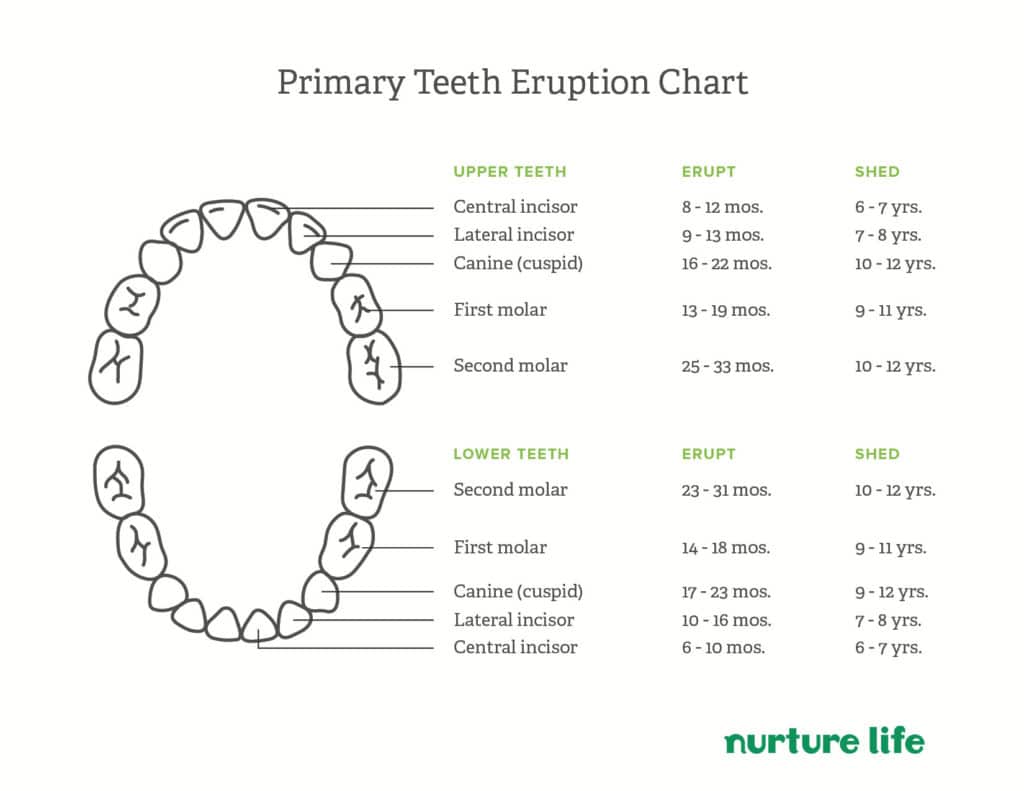Toddler Teething: What to Expect
Phases of Teeth Growth
If your little one has passed the one year mark and has endured the challenges of teething, you may think the discomforts of teething are behind you. Around 18 months, it often appears that they have a full complement of baby teeth. However, the two-year molars have yet to erupt.

What Age Do Toddlers Get Molars
Two-year molars are your toddler’s second set of molars that emerge posterior to (that is, emerge further back in the mouth than) the molars that came in around their first birthday. Second molars typically erupt anywhere between 19 months and 3 years of age. Since these molars are large and square compared to your toddler’s anterior teeth (the teeth they use to bite rather than chew), it might seem like they would cause more discomfort—but in fact, you may not even realize when these teeth erupt. Many toddlers present with minimal symptoms with the eruption of these teeth.
Toddlers typically stop teething by three years old, although they may stop teething even before, depending on when their two-year molars fully emerge. By this time, your toddler will have developed all 20 baby teeth, which are also known as primary teeth. To compare, adults have 32 teeth, including 12 molars (4 of which are wisdom teeth) and 8 premolars.
Toddler Teething Symptoms
Each child reacts to pain differently. If necessary, soothe your toddler with the same remedies you relied on when their previous baby teeth erupted. At this age, some kids are able to express feelings with signs or basic words, which may be helpful for parents to understand their cause of discomfort, so encourage your child to communicate verbally.
Toddler teething can be mistaken for ear infections, since posterior molar eruption may cause generalized pain that radiates to the ear. Baby or toddler teething, however, does not cause ear infections. If your toddler has a persistent fever, appears lethargic or has ear drainage, consult your pediatrician, as these are more typical signs of an ear infection. Tugging on ears, fingers in the mouth, and increased drool in the absence of the previously mentioned signs are more consistent with teething pain resulting from sore gums.
Similarly, teething should not cause a high fever. While your toddler may experience a minor uptick in temperature while teething, their fever should not exceed 101°F. If their temperature does rise above 101°F or if their temperature lasts more than a few days, it’s probably attributed to something other than teething. Consult your pediatrician to rule out illness.
Many parents observe that their toddler’s gum pains are worse at night, causing them to sleep fitfully, if at all. There’s no medical reason for why your baby or toddler’s teething pain would be worse at night. Some child doctors think that this trend isn’t actually due to an increase in pain, but rather can be attributed to general tiredness after a long day. When your toddler is tired, they may be crankier, which exacerbates their teething symptoms.
Your toddler may experience ear pain or a minor temperature while their two-year molars erupt; they also may struggle to sleep through the night. The key to determining what can be attributed to their two-year molar versus another illness is longevity. If the symptoms are consistent over three to five days, it’s likely not caused by their molar eruption.
Feeding During the Two-Year Molars
While your teething toddler’s molars are growing, chewing might cause pain. Your child might drool more and become fussy more quickly during mealtime. Plan meals around their symptoms—choose foods that are easy to swallow and don’t take a lot of work to eat. Here are a few food ideas for your teething toddler:
Smoothies. Turn mealtime into a treat that’s soft and cold for your teething toddler’s gums. Smoothies are quick to make if you have frozen food on hand and can be a nutritious breakfast option for your toddler. You can even include dark green veggies like kale and spinach.
Mashed bananas. Even easier to prepare than smoothies, mashed bananas can be mashed with a fork or potato masher. Use fresh or frozen bananas and add a nut butter for a protein boost.
Soups or stews. Healthy, vegetable-filled soups and stews are easy to eat options for your toddler. Opt for smoother soups rather than chunky ones that require more chewing.
Pureed fruits and veggies. Pureed fruits and vegetables don’t need to be chewed, so this may be an ideal choice during periods of discomfort.
Frozen fruit. When flash frozen, produce contains the same nutritional value as its fresh counterpart. Frozen sliced grapes and frozen cherries are great options for finger-friendly snacks, and the cold temperature will be soothing for your teething toddler.
Chilled applesauce. Put this snack standby in the refrigerator before serving to your toddler for a cool, sweet dessert.
When Should I See a Pediatrician or Dentist?
The American Academy of Pediatrics recommends a call to the doctor or an emergency room visit if your child has a fever above 104°F, if your child’s fever has lasted longer than five days or if fever-reducing medicines do not reduce the fever. Take behavior and activity level into account, too. Observe how your child behaves and whether they’re acting like themselves.
Knowing the symptoms and the timeline for your toddler’s teething will help you be prepared when the two-year molars erupt. Teething symptoms like gum and ear pain can be remedied by soft, cool foods. Once your toddler has all 20 of their baby teeth, it’s now time to keep the teeth healthy and strong. Before you know it, they’ll be losing their baby teeth and developing their first adult teeth: the six-year molars.
For more information about Dr. Reena’s work at Growing Smiles, please visit the Growing Smiles website.

